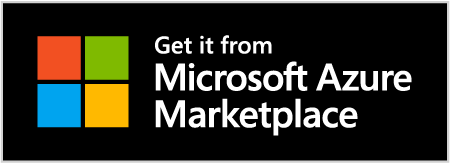The Human Resource Team serves as the foundation of every company. From recruiting new employees to managing and streamlining procedures for several departments, every aspect of the job is demanding. An organization’s human resources personnel must be given the finest and most creative tools to have a strong backbone.
Many firms have identified digital transformation as their top priority, but how can they do it when their IT teams are burdened with massive backlogs that seem to have no end in sight? How can they successfully make the switch to digital when highly trained developers required to do the legwork are in short supply, and time is at a premium?
The amount of strain placed on IT staff is enormous. And although IT teams are trying their best, they are nearing their limitations as the number of development requests outpaces their ability to meet them.
As a result, low-code development has risen to the top of the priority list for businesses wanting to expedite their digitization and modernization initiatives in recent years. This software development platform allows HR and recruitment personnel to replace time-consuming spreadsheets with more efficient workflows, establish their career websites, construct talent analytics dashboards, generate surveys, and minimize the number of manual activities they perform.
Because of the widespread digitalization that occurred during the pandemic, there is a high need for individuals with skills in no-code automation, document process automation, data analytics, and artificial intelligence. By developing its software, Human Resource avoids long delays for overworked IT employees and the high cost of hiring external consultants or third-party software suppliers.
Therefore, it is understandable that human resources departments are becoming more engaged in developing digital apps and other tools that support their strategic goals, rather than contracting those processes to different developer teams in information technology (IT).
In turn, this has unlocked the way for human resources figureheads to adopt a rapidly emerging enterprise cultural shift: empowering employees to act as “citizen developers,” who can assist in the implementation of computer experiences themselves using simple, “low-code” development tools that do not necessitate systematic developer training or software capabilities.
Low-code development solutions are rapidly getting more complex, and HR departments have taken note of this shift in technology.
The technology platform is growing in order to give a more integrated development experience that includes data linkage, data analysis findings, and unique artificial intelligence solutions. The need for software systems based on the “low-code” approach increases. According to a recent report released by Gartner, this industry is predicted to generate USD 13.8 billion by the end of 2021, representing an increase of more than 23 percent when compared to the same period the previous year.
What Is Low-Code? What Are Low-Code Platforms?
Low-code software development is a visual approach to software development that streamlines the whole development process in order to speed up the delivery of finished products. In software development, low-code development platforms are a collection of technologies that allow for the visual creation of programs using modeling and a graphical user interface.
Low-code development allows developers to avoid the need for manual coding, resulting in a faster time to bring an application into production. Users with little or no prior experience in coding or software development can benefit from these easy ways to construct software for a variety of objectives, including the development of mobile and commercial apps.
Even while the concept of low-code development isn’t new, the concept is gaining acceptance in ways that should pique the curiosity of HR executives. For starters, a variety of low-code technologies may be utilized to handle some of the most frequent problems in human resources.
And as more firms embrace this low-code strategy to technology, the way HR handles the development of software tools may undergo a significant shift.
For example, by minimizing the dependency on internal IT departments or external technology budgets, human resources may be able to accelerate the introduction of certain products. That’s a huge benefit when the development expense puts a crimp in the works.
What Is No-Code?
The days of making continuous requests to your development team whenever a new feature is required for your staff management software are over. You may empower your HR staff to create apps on their own without the need to learn programming languages or rely on technical support from others. Human Resource operations may be automated via the use of no-code, allowing employees to devote more time and effort to the more essential duties at hand.
For example, rather than establishing a complete employee database from scratch, an employee may edit the fields visually using a template without having to write a single line of programming code.
Using a no-code platform, more of your staff may be better equipped to become citizen developers. To fulfill the expectations of rapid application delivery, business developers and other non-programmer positions may step in and construct corporate websites and phone applications on their own.
Low-code and no-code are terms that are often used indiscriminately; however, there is little distinction between the two classifications of programming languages. Low-code approaches, which leverage visual development environments and automated connections to backend platforms, libraries, software platforms, and APIs, are often aimed at users with some programming knowledge or developers who need to develop applications for various platforms efficiently. A step further, no-code solutions include visual drag-and-drop interfaces that require no coding at all, therefore eliminating the need for any coding.
Key Features In Low Code Development Platforms
Using a low-code development environment, you can minimize the amount of time it takes to create, deploy, and alter cutting-edge, powerful corporate applications from conception to deployment. Development is made more accessible by modern low-code development platforms at every stage of the development process, from version control and functional evaluation to process improvement.
In order to carry out their everyday tasks, the majority of Human Resource teams rely on inefficient procedures and technologies like paper forms, emails, and Excel spreadsheets. On the other hand, software suppliers rely on digital forms and other tools that lack the intricacy and flexibility necessary to meet the demands of an HR department.
Here’s where Low-code systems act on behalf of human resource departments in need of assistance. Let’s have a look at some of its features to grasp the how better. 1. Visual modeling
Companies are beginning to see the enormous potential of visualizing their data—particularly when it comes to finding insights and communicating more effectively with stakeholders. In particular, data visualization is proving to be very beneficial to teams in the human resources (HR) department.
A wide range of data is available to HR, including employee information, compensation information, engagement scores, feedback from surveys and email answers, and performance evaluations, among other things. Fortunately, technological advancements have made it feasible for firms to store, analyze, and translate their human resource data into actionable visual insights and insights.
The development of applications using visual models and frameworks is much quicker than the development of apps using code. Users of the low-code development platform may use visual modeling to graphically express the production operations in their code before the code is completed and implemented. It enables you to have a visual aid for your application, which is very useful for users who are not comfortable with hard coding.
Low-code platforms, which are equipped with visual modeling capabilities, employ inbuilt elements to portray any facts in a form that is legible by anybody – from ordinary business users with no technical expertise to experienced developers. 2. Cross-Platform Accessibility
Multi-device compatibility in low-code platforms is a beneficial feature to have. Many of the low-code development platforms available today support cross-platform accessibility and enable you to create applications that have a cross-platform accessibility capability as a standard feature. In addition to the flexibility to utilize the low-code platform on any device running a major operating system, its cross-platform compatibility enables users to create programs that can operate on all main platforms and devices, which is a significant advantage. 3. Reusability
An important aspect of low-code development platforms is that most of the main functionality is already pre-built into modules that can be dragged and dropped anywhere they are needed. When developing necessary apps, it is critical that users may reuse pre-built or freshly generated modules, plug-ins, and full programs on a low-code platform. A wide range of apps and other software may benefit from the pre-created pieces, which makes the development process more manageable and significantly faster. 4.Drag-and-Drop Interfaces
We’re leveraging more applications than before to complete our tasks. The frequent updates and enhancements being made to them imply that we’re constantly discovering new things about the tools we operate.
Here’s where the drag-and-drop feature really excels. It considerably minimizes our time to learn your tools and techniques. The visual shortcut it provides helps us to remain alert even when the digital ground under our feet alters beneath us. 5.Reporting Tools
It is possible to develop extensive reports without the requirement to export data to an external system using a low-code BPM platform that has built-in reporting capabilities. Organizations may benefit from features such as measuring key performance indicators (KPIs) to discover operational inadequacies and utilizing service level agreement (SLA) reporting to quantify the costs of delays thanks to sensibly built reporting tools. 6. Security
Compared to apps developed using standard coding methodologies, low-code applications can be more secure. That’s because low-code platforms often come with built-in security protections that may automatically eliminate risks associated with common security vulnerabilities such as SQL injection and cross-site scripting (XSS). On the other hand, custom code may present new hazards, which must be taken into consideration.
As a result, HR must understand and adopt policies and processes to satisfy security needs at the platform and application levels. Low-code platforms are equipped with a plethora of security controls and practices. 7. Scalability
Many HR functions in smaller businesses will select software that is convenient at the moment. However, when the firm grows, they discover that the platform either cannot handle their needs or has grown far costlier than they had originally anticipated. A no-code technology is adaptable enough to grow with your company’s growth in terms of staff size.
Low-code solutions should be capable of scaling, both in terms of utilization in the environment and the size of your application. Today, low-code development should be enterprise-ready compared to earlier ones, mostly employed for smaller, departmental, and less essential applications. The correct platform is important with all of the requisite security certifications in place and demonstrated expertise with large-scale efforts.
What Kind Of Problem Does Low-Code Solve?
Low-code platforms are intended to handle updates via automation, hence lowering the overhead expenses of maintaining an application and relieving the development team of the burden of managing technical debt. As a consequence, development cycles are shorter, more streamlined, and more maintainable, with less waste and less maintenance. Developers spend less time revising code, which means they have more time to devote to developing new features and functionality for existing products.
While the majority of the attention has been focused on analytics, artificial intelligence, and chatbots, the introduction of No-Code and Low-Code solutions appears to be a potential alternative. Through app development, organizations can eliminate redundant manual tasks, reduce paper and email trail accumulation at the workplace, eliminate the need to chase down employees for dependencies, speed up request and approval processes through workflows, and create overall self-serving portals for their employees, allowing each employee and the HR team to focus on more key strategic company operations, such as strategic planning and strategy implementation.
Creating an app for services like recruiting and employee onboarding, performance evaluations, and employee offboarding is something anybody on the team can do.
The Advantages Of Using A Low-Code Platform
The benefits of low-code are realized through purpose-built apps that contain a low-code platform, tools for multi-experience creation, some automation, interface, and impact reporting tools. Low-code implementation will provide visible outcomes for the company in a short period of time.
When compared to the earlier method of manually coding an app, visual syntaxes and models make it much simpler to design an application. This tries to address a significant issue in the way many firms operate.
Here are some of the most significant benefits of low-code platforms:
Customization Capability
Human resource and recruiting professionals may pick and choose the features, processes, and automation they wish to include in their everyday operations. When compared to bigger human resources teaching suites, which often contain a long list of capabilities that might be confusing and daunting for novice users, this is a significant improvement. As a result of no-code technology’s low barrier to entry, individual users may rapidly and easily configure the platform to meet their own requirements and capabilities.
Because of the growing diversity of client tastes, customization has emerged as a crucial option for firms to provide value. Low-code provides a foundation of capabilities that can be quickly changed to match the organization’s specific demands without the need to return to R&D.
Design And Implementation Of Chatbots
Chatbots are generally employed in customer service to reduce the amount of time it takes for a company to respond to a consumer who contacts them. The growing emphasis on digitalization has increased the need for text and voice-based bots that automate day-to-day operations while also providing great customer service.
There is now a shift towards chatbots that can be implemented with little or no coding knowledge required. This allows for speedier delivery of applications while also resulting in cost reductions. Enterprises began looking for smart solutions that allowed people with little or no coding knowledge to quickly deploy artificial intelligence-powered bots for various business use cases as the IT department dealt with massive resource constraints and struggled to develop apps for a variety of business problems. With the use of a web API, any programming language may be used to construct chatbots.
Agility
Using creative, digital solutions that address business challenges, businesses may be more agile in responding to market changes and identifying new business possibilities. Low-code enables businesses to quickly adapt to new digital efforts prompted by unexpected market shifts as well as new consumer and customer requirements.
A single person may create an app in a matter of hours, allowing for much quicker project deployment. Furthermore, conventional programming is a costly and time-consuming endeavor when it comes to adapting to your changing business needs as they arise. With a low-code platform, your developers can quickly and easily incorporate changes whenever required, resulting in a more positive client experience.
Reduced Cost And Time
Expert developers are not only hard to come by, but they can also be prohibitively costly for you to employ. Furthermore, app development is costly, especially when you consider the costs of creation and implementation to your business. However, low-code development reduces the costs associated with process automation, app innovation, and system implementation projects.
Firms that have to automate complex, error-prone, and time-consuming human resources procedures must undertake digital transformations as quickly and carefully as possible. Low-code development enables HR to create features, functionality, and products more quickly and effectively, reducing the risk of a market change during the development process.
Usage Of Robotic Process Automation For Repetitive Tasks
Platforms that do not need any coding are specially developed to automate and expedite time-consuming and laborious processes. Manual operations such as analyzing resumes, sending invitation and follow-up emails, and assigning responsibilities may all be automated on a rolling basis when new job positions arise with just a small amount of setup and testing. In addition, as people gain greater proficiency with the platforms over time, they will be able to discover areas in their own professions that may be automated or simplified via their use of the platform.
Enhanced Creativity
Your HR staff will have more time to devote to working on more demanding applications that need innovative solutions. Because of its speed and simplicity of use, low-code enables rookie developers and tech enthusiasts to design programs as if they were full-stack engineers without the need for specialized knowledge.
Reduced Maintenance
All human resource functions are meant to accomplish a single goal: to ensure that a company runs smoothly and effectively. Software may function for an extended period of time without ever having to be updated; nevertheless, as software becomes older, it might become less valuable due to changes in the environment in which it’s being used. It’s easy to confuse maintenance with issue fixing; however, the majority of maintenance costs are really comprised of additions or expansions to the application’s functionality rather than bug fixes itself.
Low-code apps make use of pre-built modules to eliminate technical obstacles throughout the development process. Therefore, they need minimal maintenance to continue to operate efficiently. It is less difficult to maintain an application that has been constructed properly. Reduced time spent on maintenance equals more time available to develop and deploy new, high-value capabilities.
Thanks to low-code development, HR departments may finally bid bye to hardcoded, costly, and complicated software. Low-code integration allows compensation, incentive, and continuous performance management solutions to be safely linked with your core array of products and services. As a result, each human resource’s difficulty may be tackled with confidence.
The Future Is Low-Code.
Like almost every other professional today, HR managers are confronted with a plethora of data to handle. He or she has hundreds of pages of material to go through: employee evaluations, acceptance letters, pay and promotion information, personal paperwork, and a slew of other pieces of information to collect, assemble, monitor, analyze, synthesize, and categorize. There are a myriad of applications available for HR professionals, but there aren’t many that are specifically focused on data management and document management.
Low-code development systems are flourishing, which suggests that no-code software development may be the new frontier. Because competent developers are a precious and costly asset, only a few large organizations have the luxury of utilizing software tailored precisely to their staff and processes as a result. Even if you work for these kinds of organizations, you must keep in mind that time is valuable and must not be spent carelessly.
Many HR managers are already looking for customized solutions, either for their personal requirements or for the needs of the organizations for which they work. If they aren’t already, they will be in the near future. The wave is cresting, and we believe that the moment has come for human resource professionals to embrace citizen development and understand its genuinely revolutionary potential, which ought to be now.
A no-code application may aid in the automation of HR operations, creating a smoother workflow, and reducing overall stress on your team. Several solutions provide free trials or consultations so that you can decide whether or not this sort of software might be beneficial to your human resources team.
Humansoft Users Boost HR Productivity
Humansoft from Genbil is a fully-featured software solution that provides several alternatives to HR professionals. HumanSoft provides everything they would expect to find in a high-performance human resources platform. This is software that has been better designed: it is modular, easy to use, and simple to integrate. HumanSoft, in particular, was created fully utilizing tools supplied by the Microsoft Power Platform, which is a set of complex apps that enables users to analyze data, design solutions, and automate processes, among other things.
The whole process, beginning with the recruitment of your personnel, can be managed by HumanSoft, which not only allows you to develop your own specific procedures but is also the first to provide recommendations on the most efficient ones. HumanSoft empowers users to take control of their own future, allowing them to build and modify work processes with a few keystrokes at a time.










